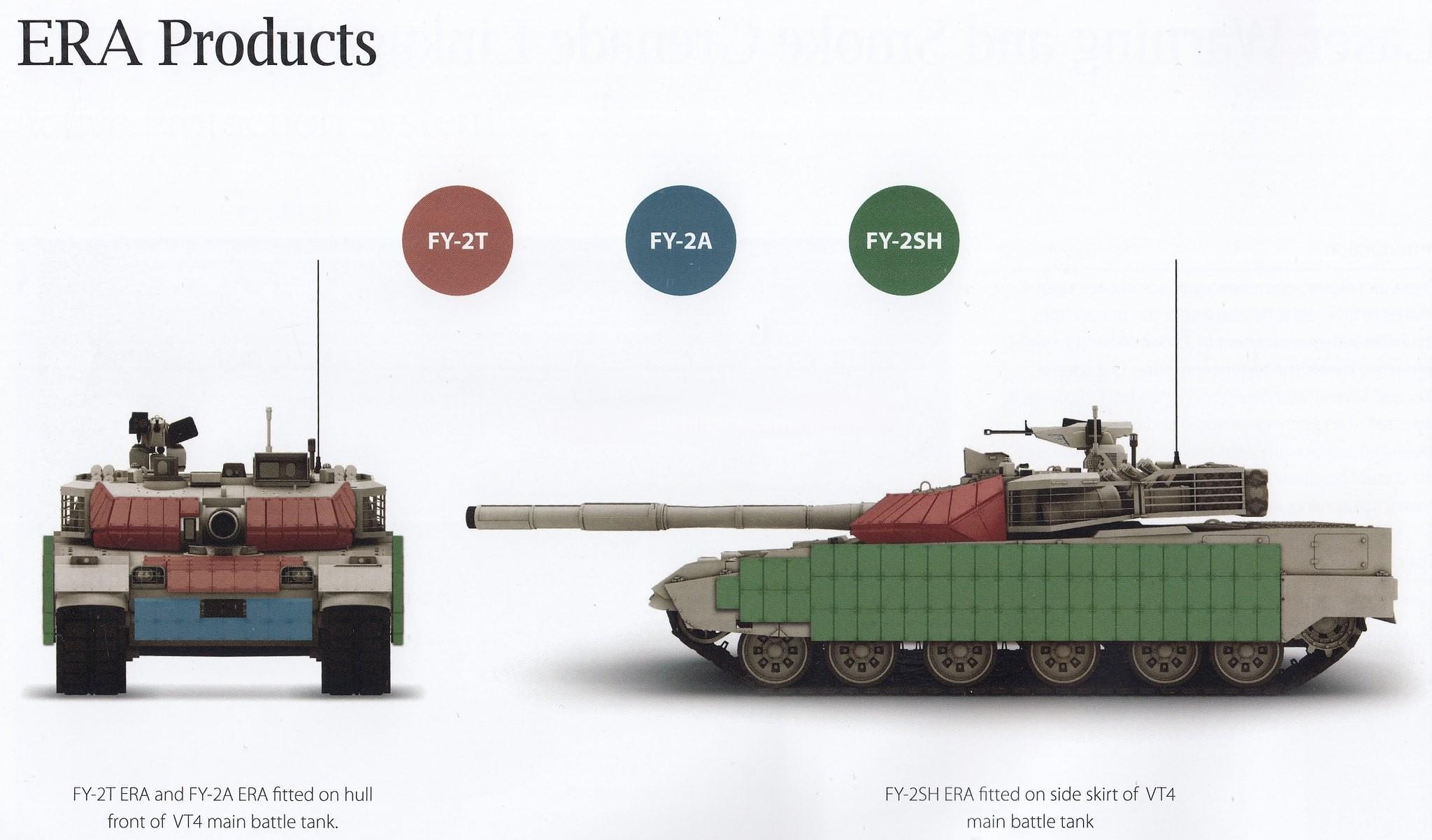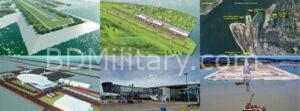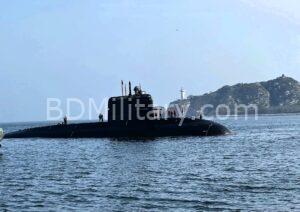China’s modern tank protection philosophy has evolved rapidly over the past two decades, reflecting a shift towards modularity, layered defences and field-level maintainability. The FY-2 family of explosive reactive armour (ERA) — comprising the FY-2A, FY-2T and FY-2SH variants — exemplifies this approach. Designed for flexibility and cost-effectiveness, these armour modules have become a key component on both domestic and export main battle tanks, including the Type 96, Type 99 and VT series.
Explosive Reactive Armour: China’s Practical Shield
Explosive reactive armour works by sandwiching an explosive layer between two metal plates. When struck by a shaped charge or kinetic energy penetrator, the explosive detonates, driving the plates outward and disrupting the incoming jet or rod. This dramatically reduces the penetration effect before it reaches the underlying composite or steel armour.
China employs ERA extensively because it provides a significant boost in protection for relatively little weight or cost. It can be replaced easily in the field and tailored to specific mission profiles. However, ERA is single-use at the point of impact and must be integrated with other layers of protection, such as spall liners, composites and active protection systems (APS).
The FY-2 Family Overview
FY-2A
The FY-2A is a general-purpose ERA module developed for frontal protection against heavy anti-tank munitions. It is primarily installed on turret faces and upper glacis plates. The module is designed with safety in mind, ensuring controlled detonation that minimises collateral damage to nearby components or infantry. Its dimensions and weight balance allow effective coverage without excessive strain on the suspension system.
FY-2T
The FY-2T is an enhanced version engineered to counter modern tandem warheads, which feature a precursor charge designed to detonate standard ERA before the main charge penetrates. The FY-2T’s internal arrangement uses multiple explosive layers and sequencing mechanisms to mitigate this threat, giving vehicles fitted with it increased resilience against advanced anti-tank guided missiles (ATGMs).
FY-2SH
The FY-2SH module is optimised for lateral protection. It is mounted on the hull sides and skirts to defend against rocket-propelled grenades (RPGs) and short-range HEAT projectiles. These modules provide coverage over the vehicle’s vulnerable flanks, typically in a 180-degree arc, without adding excessive bulk. They are often used alongside side skirts and internal liners to improve crew survivability.
Technical Characteristics
Manufacturer data indicates that FY-2 modules typically weigh between 20 and 35 kilograms each, depending on configuration. They are rectangular in shape, measuring roughly 375 × 250 × 75 mm per block. The modules are mounted on steel or composite bases using bolt-on fasteners, allowing quick replacement after combat damage.
The FY-2A offers resistance comparable to several hundred millimetres of rolled homogeneous armour (RHA) against HEAT threats, while the FY-2T improves that rating against tandem warheads. FY-2SH modules, though lighter, maintain sufficient explosive content to neutralise RPG-level attacks from the sides.
Operational Integration
In Chinese service, the FY-2 series appears on the Type 96A, Type 99A and export-oriented VT-4 and VT-5 tanks. On these vehicles, FY-2A and FY-2T modules are fitted to the frontal arc of the turret and hull, while FY-2SH covers the sides. This layered protection is often combined with passive composite armour and, increasingly, soft-kill or hard-kill APS systems.
Export clients appreciate the flexibility — modules can be configured for high-intensity warfare with maximum coverage or for lighter expeditionary deployments where mobility takes precedence over full protection.
Advantages and Limitations
Strengths
- Modularity: Damaged panels can be replaced quickly in the field, ensuring continued protection.
- Affordability: ERA provides a significant protection increase without the high cost of advanced composites.
- Adaptability: The FY-2T variant effectively addresses tandem-charge threats, extending relevance against modern ATGMs.
Limitations
- Single-use modules: Each block is expended after impact and must be replaced.
- Limited kinetic energy resistance: ERA remains less effective against long-rod penetrators such as APFSDS rounds.
- Explosive safety concerns: While modern Chinese designs meet stringent handling standards, explosive armour always presents additional logistical challenges.
A Layered Protection Philosophy
China’s tank protection strategy now centres around synergy between ERA, composite armour and active defence systems. The FY-2 family forms the reactive layer in this system — designed to absorb or defeat the first impact. Beneath it, passive composites handle residual penetration, while APS technology intercepts incoming projectiles before impact.
This layered concept is visible on current-generation platforms like the VT-4A1, where FY-2 or FY-4 modules work in concert with APS units and sensor-based threat detection suites.
The Next Evolution
China is already moving towards newer non-energetic reactive armour (NERA) and multi-layered hybrid packages that can withstand multiple hits without explosive detonation. These systems are expected to complement, rather than replace, FY-series ERA in the near term. The next step will likely be fully modular protection packages combining ERA, NERA, and APS, giving commanders the ability to tailor protection levels in the field.
Assessment
The FY-2A, FY-2T and FY-2SH armour modules represent the practical heart of China’s modern tank protection ecosystem. They provide effective, affordable and adaptable defence against a wide range of battlefield threats. While not invulnerable, their integration into Chinese and export vehicles demonstrates a mature understanding of survivability — balancing technology, cost and operational flexibility.
As tank warfare evolves and threats grow ever more sophisticated, China’s FY-2 family remains a significant step in bridging traditional explosive armour with the emerging age of intelligent, layered protection systems.

Amit Bhattacharya is a leading defence procurement expert with deep expertise in modern weapon systems and military hardware acquisition. Over more than a decade, he has collaborated with top defence contractors and strategic research institutions, delivering incisive analysis on procurement frameworks, capability development, and technology integration for armed forces worldwide. Amit bridges the gap between operational requirements and industrial capacity, providing authoritative evaluations of modernisation programmes, defence budgets, and acquisition reforms in both established and emerging defence markets. He leads the Defence Procurement and Defence Industry sections at BDMilitary, shaping strategic discourse on defence innovation. Amit earned his Master of Policy and Governance (MPAG) from the University of Canterbury, New Zealand, complementing his practical expertise with advanced policy and governance insight.



